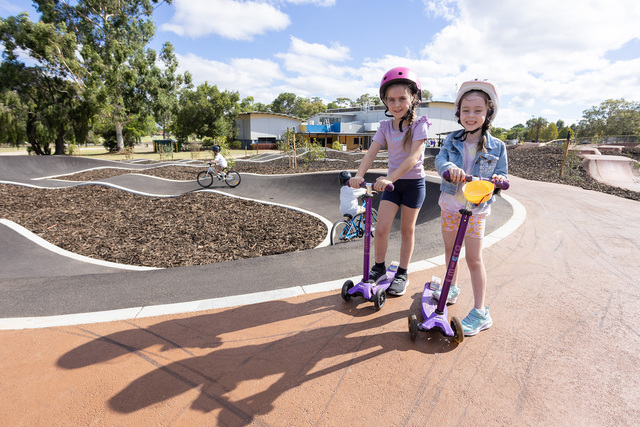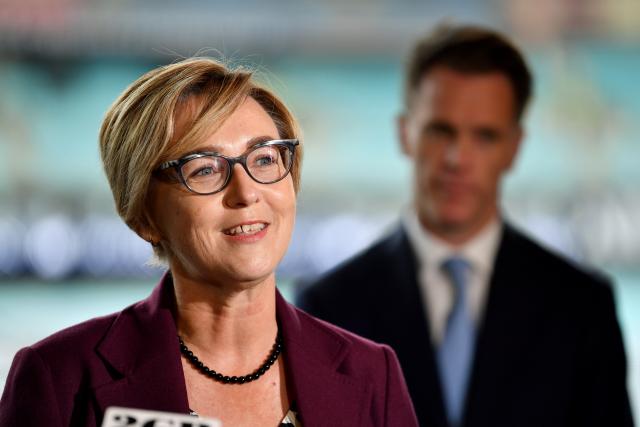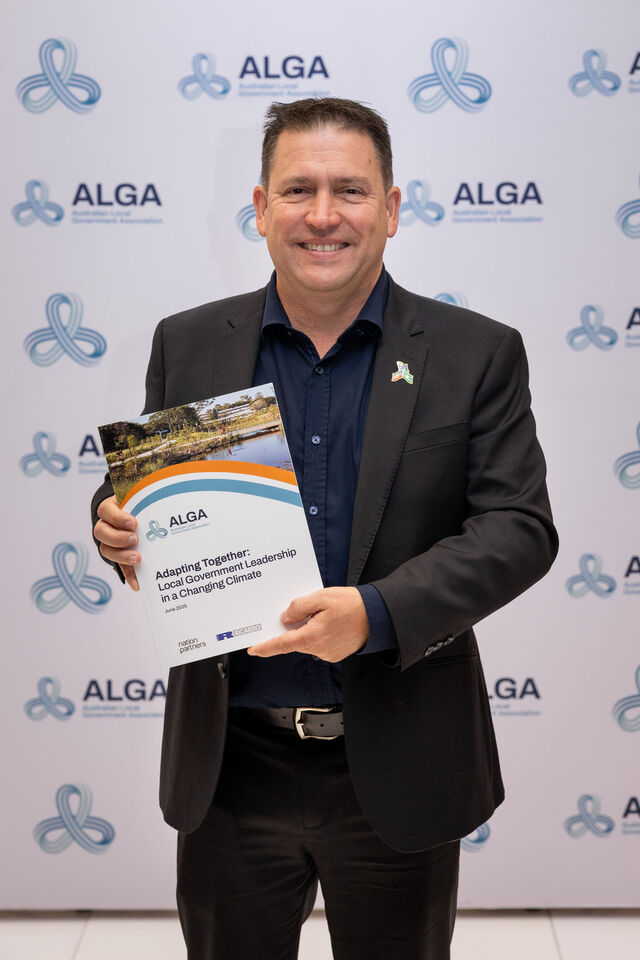In March Local Governments across the country plan to use Harmony Day (21 March) to profile the services and programs they use to promote community harmony. Harmony Day recognises Australia’s identity and the values that bring us together. It is about celebrating the Australian way of life and an opportunity to commit to the benefits of living in a country that embraces common values including respect, participation, acceptance and a fair go for all.
Five Councils in particular see the occasion as an opportunity to highlight innovative projects funded under the Australian Government’s Living in Harmony programme.
Since 1999, some 28 Local Governments have used Living in Harmony funding to work with schools, non government agencies, community organisations and culturally diverse communities to encourage residents of all backgrounds to fully participate in the Australian way of life.
Apart from Harmony Day and funded community projects, Living in Harmony also creates national partnerships to address issues on a broader scale.
Ipswich City Council, Queensland
People from 115 countries speaking over 80 different languages live in the Queensland City of Ipswich. The City’s population is due to reach 317,000 by 2020 and managing cultural diversity is an ongoing challenge in this rapidly developing region.
A recent Ipswich City Council survey showed some residents were apprehensive about the City’s cultural diversity. Some groups were being stereotyped and there have been instances of students at local schools being socially excluded because of their cultural identity or religious beliefs. Council was successful in applying for $49,500 in Living in Harmony funding for its “Who Do You Think We Are” project.
Working alongside the University of Queensland, the Council will develop a DVD that profiles the City’s different communities. Indigenous, Samoan, Vietnamese, Sudanese and Spanish speaking groups will all be encouraged to record the diversity of their cultures. Those born overseas will document their migration experiences and explore the range of issues they experience in negotiating a new life and culture in Australia.
When completed, the DVD, and an accompanying resource kit, will help to raise greater awareness of the City’s cultural diversity and demystify misconceptions. The new resources will be distributed to local businesses, service providers and non government organisations. All sectors of the City including Queensland Health, the Ipswich Indigenous Circle of Elders, local high schools and religious groups have endorsed Council’s approach.
In 2005 Ipswich City Council received $40,000 in Living in Harmony funding for a project involving schools and young people in the Ipswich region. The project received a commendation award in the 2006 National Awards for Local Government.
City of Salisbury, South Australia
The City of Salisbury has received $32,400 in Living in Harmony funding for its Partners in Participation project due to start shortly. This project will address the social isolation felt by African, Afghani, Burmese and other refugees and migrants who are recent settlers in Salisbury.
Partners in Participation will use a ‘buddy system’ to link up 20 new arrivals with 20 long time Salisbury residents who will introduce the new arrivals to the City. Together the 40 “buddies” will attend weekly meetings, getting to know each other and jointly planning Salisbury’s main Harmony Day (21 March) event in the Council’s John Harvey Gallery. The “buddies” will also visit local libraries, sporting centres and other community facilities, be part of Australian citizenship and Local Government forums and participate in workshops on volunteering and community involvement.
Skills development for the new arrivals includes learning meeting procedures and public speaking. City officials will use local media and a CD to tell the City’s 120,000 residents about the results of the project and let them know more about the new residents.
Salisbury’s plan is simple but very effective. By linking up long time residents with recent arrivals, the new settlers have a unique opportunity to build personal networks and learn about Local Government and its role in the life in Australia.
Partners in Participation follows an earlier Living in Harmony project in which the City took the lead in connecting local primary students from various backgrounds with residents of aged care facilities.
Armidale Dumaresq, New South Wales
Armidale is home to over 60 different nationalities including a significant Aboriginal community, refugees from Sudan under the Australian Government’s Sanctuary Program, and international students studying at the University of New England. The Armidale Dumaresq Council is active in encouraging mutual respect and understanding among the Shire’s 25,000 residents. It recently received $45,000 in Living in Harmony funding.
Armidale Dumaresq’s Together Together project will involve providing public speaking and leadership training for 12 volunteer ‘Ambassadors’ drawn from the Shire’s different communities. Once trained, the Ambassadors begin a speaking program to share their cultural experiences with local schools, TAFEs, service providers and service clubs.
Together Together also features a school competition, a day to recognise the Ambassadors’ achievements, a Council calendar with a diversity theme and community radio promotions.
Council’s Aboriginal Consultative Committee and Armidale’s Migrant Advisory Service are behind the project as a practical way to encourage understanding between people from different cultural backgrounds.
Hobart City Council, Tasmania
In recent years the cultural map of Tasmania has changed rapidly, particularly with an increase of new settlers from Africa. During the first two terms of the 2007 school year, Hobart City Council will turn to a performing arts project to foster community harmony and raise greater cultural empathy between different groups of young people in the City.
Council’s Bridging the Gap, which recently received $50,000 in Living in Harmony funding, will encourage Years 9 – 12 students at Elizabeth College to use theatre and music to discover the value of the City’s cultural identities. Sixteen students from different backgrounds will create a theatre script dealing with different cultural values and life experiences. They will take part in around 20 workshops including being introduced to set design and construction. Two professional actors will help the students polish up their final efforts before they take to the stage and 1,200 of their college peers.
The Bridging the Gap production will also be toured to other schools in southern Tasmania. To extend the project even further Hobart City Council will distribute a project teacher’s guide and booklet to other school communities throughout the State to help them identify their own cultural diversity concerns and ways to address them.
Glenorchy puts community participation on the bus
As part of a recent Living in Harmony project, Glenorchy City Council has moved colourful and eye catching posters celebrating cultural diversity and community harmony into the schools and on to the streets of Glenorchy City. Council, in close partnership with Metro Tasmania, has put the large vinyl posters celebrating inclusiveness and participation onto the interiors and exteriors of 35 of Southern Tasmania’s Metro bus fleet. The innovative poster designs come from the Glenorchy City Council’s project, Diversity: We Are Who We Are.
“In March 2005, Council, with guidance and assistance from the Glenorchy Cultural Diversity Advisory Committee, which is drawn from 12 culturally diverse communities, held a forum with more than 100 residents from different cultural backgrounds,” said Mayor Adriana Taylor. “The forum raised a series of issues, such as discrimination – often unintentional – faced by people from different cultures when accessing public transport, the school system, and range of other services.”
Council responded with a multi faceted strategy to help residents from culturally and linguistically diverse backgrounds to access local education and transport services. Much of this strategy involved community awareness raising of issues faced by Glenorchy residents from refugee and migrant backgrounds.
Those involved in the awareness raising project included students and teaching staff at five Glenorchy schools, Metro bus drivers, and the wider Glenorchy community through the poster program.
The strategy was implemented after the Council was successful in receiving almost $24,000 from the Australian Government’s Living in Harmony programme.
The Living in Harmony Programme is adminstered by the Department of Immigration and Multicutural Affairs. It funds community projects and partnerships that create opportunities for people to participate in the Australian way of life, and that promote Australian values and mutual respect.
The Mayor said that under Council leadership 170 local students were introduced to the stories and traditions of Glenorchy’s different cultural groups.
People from refugee backgrounds ran five interactive sessions at three City primary schools and two high schools. The sessions encouraged students to explore the foods, music, language and culture of various traditions. Students also met with long established Polish, Italian and Greek communities and attended events with newly arrived Sudanese and Ethiopian groups. These activities gave the students a greater appreciation of how Glenorchy’s different cultures contribute to life of the City.
An experiential learning program was the next stage of the project. Selected students explored group cultural behaviours and the experiences of belonging and not belonging. This led to an educational learning package for the participating schools, which may be adapted for use in other Tasmanian schools.
As the project unfolded, Glenorchy Council worked with artist and photographer, Lucia Rossi, and graphic designer, Dean de Vries, to capture the students’ experience in photographs and stories. This resulted in ten poster designs illustrating different aspects of community harmony.
“We have been truly amazed at the strength of interest in the posters,” Mayor Taylor said. “They are not only being proudly displayed throughout the City and on Glenorchy’s Metro bus fleet, but due to the incredible demand for the striking images, 350 sets have also been earmarked for all Tasmanian schools and a wide variety of organisations – including Local Government offices – throughout the State. On top of that, 50 sets are to be distributed nationwide.”
The posters are just one side of extensive behind the scenes work by hundreds of people from culturally diverse communities both within and outside the Glenorchy area. The project’s success comes from Council being able to effectively link experienced local presenters from a refugee background, staff and students of local schools and the City’s multicultural communities.
For further information on this extensive project, please go to GCC website gcc.tas.gov.au/harmony
For images and a range of project launch participant interviews, go to www.abc.net.au/hobart/stories/s1718245.htm
Since 1999 the following Local Governments have received Living in Harmony funding:
- Albury City Council
- Armidale Dumaresq Council
- Auburn City Council
- Brisbane City Council
- Canterbury City Council
- City of Darebin
- City of Kalgoorlie-Boulder
- City of Salisbury
- Glenorchy City Council
- Hobart City Council
- Hume City Council
- Ipswich City Council
- Lachlan Shire Council
- Launceston City Council
- Logan City Council
- Nambucca Shire Council
- Palmerston City Council
- Rockhampton City Council
- Shellharbour City Council
- Shire of Campesie
- Shire of Carnarvon
- Shire of Laverton
- Shire of Roebourne
- Sutherland Shire Council
- Swan Hill Rural City Council
- Tasman Council
- Town of Kwinana
- Wollongong City Council








